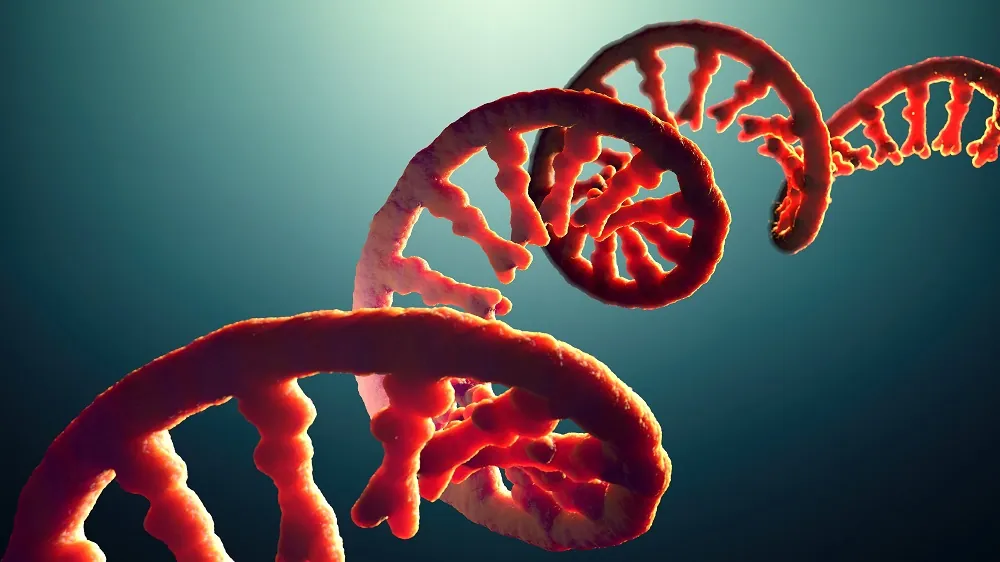In a groundbreaking study, researchers have successfully produced cytoskeleton-like structures from RNA, marking a pivotal advancement towards the field of synthetic biology. This innovation, detailed in a publication by Heidelberg University in Nature Nanotechnology, holds promise for the development of synthetic cells, which could have wide-ranging applications in research, diagnostics, and therapeutics [1].
The Concept of RNA Origami
RNA and DNA molecules play critical roles in biological systems by carrying genetic information necessary for protein synthesis. However, their inherent properties also lend them as excellent building materials for synthetic structures. This concept isn't new; nature has utilized ribosomes, which are partially composed of RNA, for countless years.
The term “RNA origami” refers to the design and engineering of sequences that compel RNA molecules to self-assemble into intricate, predetermined shapes. This technique has been likened to the more widely known DNA origami [2].
Engineered RNA structures have showcased impressive complexity, including the creation of DNA “boxes” that transport drug agents directly to targeted areas, where they function akin to molecular delivery systems. Recent advancements, however, have propelled the development of RNA systems to new heights.
Nanostructures and Their Mechanisms
The Heidelberg research team unveiled novel RNA designs capable of assembling into tube-like and network structures reminiscent of the cellular cytoskeleton, composed of protein filaments and microtubules. The cytoskeleton is essential for maintaining cellular shape and stability.
| Structure Type | Description |
|---|---|
| RNA Nanotubes | Micrometer-long tubes forming a structural framework. |
| RNA Networks | Complex structures resembling cytoskeletal networks, enabling shape modification. |
To accomplish this, the authors encapsulated DNA templates and RNA polymerase within giant unilamellar lipid vesicles (GUVs), effectively simulating proto-cells. They introduced a bacterial transmembrane pore protein, α-haemolysin, which was crucial for the transport of RNA building blocks (nucleotides) necessary for assembly. Furthermore, magnesium ions (Mg2+) acted as a catalyst to manage the timing of transcription, preventing premature RNA synthesis.
Upon initiation, the RNA strands assembled into nanotubes within these artificial environments, achieving lengths comparable to natural cytoskeletal elements. Notably, variations in the DNA template significantly influenced the resulting RNA structures, thus highlighting the scalability and control of this innovative method.
Creating Extensive Cytoskeletal Networks
The researchers progressed further by incorporating aptamers—RNA sequences that can selectively bind to various molecular targets. This adaptation led to the formation of larger RNA networks extending tens of micrometers and mimicking cellular cortex structures found in living organisms.
This significant manipulation of shape and structure was attributed to the continuous supply of nucleotides, which was critical in generating expansive networks that physically altered the GUVs' shape, effectively emulating an authentic cytoskeletal response.
Potential Applications of RNA Origami
The intrinsic advantage of RNA origami lies in its ability to be synthesized directly within cellular systems. Once DNA templates are introduced, a single enzyme, T7 polymerase, swiftly generates multiple RNA products. This is a striking contrast to standard biological processes that require over 150 genes for complete transcription and translation.
As articulated by Dr. Kerstin Göpfrich, the lead author of the study, this development in RNA origami presents new avenues for evolving synthetic cells to manufacture their own components, fostering possibilities through directed evolution of synthetic organisms.
The implications of these advancements in synthetic cells are significant for various research fields, including aging studies, where understanding early cellular evolution and developing systems capable of mimicking life processes is crucial. Although the aspiration to construct fully functional synthetic eukaryotic cells is still a distant goal, the parameters for creating viable prokaryotic proto-cells have become increasingly accessible.
| Application Area | Potential Benefits |
|---|---|
| Aging Research | Improved understanding of cellular aging processes. |
| Biosynthetic Protein Production | Minimized reliance on bacterial systems, enhancing safety and efficacy. |
Conclusion and Future Directions
The ongoing evolution of RNA origami structures is anticipated to transition from basic scaffold functions to active participants in cellular processes by integrating ribozymes, which are self-catalyzing RNA molecules. The ultimate objective, as stated by Göpfrich, is to engineer a comprehensive molecular machinery capable of facilitating RNA-based synthetic cells that could execute complex cellular tasks.
In summary, the strides made in RNA origami not only broaden our understanding of cellular architecture but also foster a myriad of possibilities for therapeutic and diagnostic applications that could revolutionize the fields of molecular biology and synthetic biology.
Literature
[2] Dey, S., et al. (2021). DNA origami. Nature Reviews Methods Primers, 1(1), 13.












Discussion